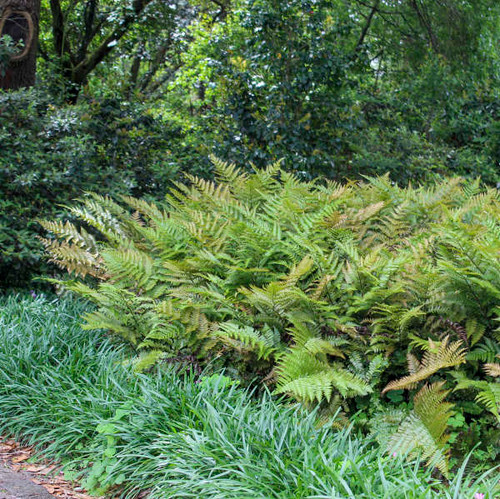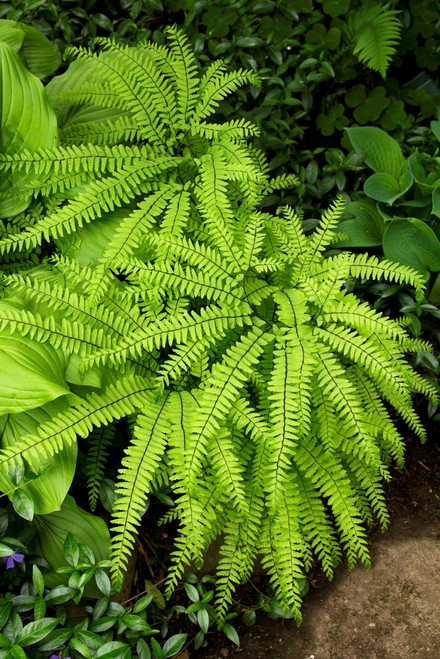Japanese Shield Fern - Brilliance Autumn Fern
The Japanese shield fern, scientifically known as Dryopteris erythrosora, is a fern species native to Japan, China, and Taiwan. It is also commonly referred to as the autumn fern or copper shield fern due to its distinctive coppery-red fronds when they first emerge. Here are some key characteristics of the Japanese shield fern:
Appearance: The Japanese shield fern is a medium-sized fern that typically grows to a height of about 2 feet and spreads through rhizomes. Its fronds are pinnate, meaning they have a feather-like appearance with multiple leaflets on either side of the central stem. When they first unfurl, the fronds display a striking coppery-red color that gradually matures into a glossy dark green.
What are the growing conditions of a Japanese Shield Fern?
Growth Conditions: This fern thrives in partial to full shade, making it an excellent choice for shady gardens or areas with dappled sunlight. It prefers moist, well-drained soil rich in organic matter. The Japanese shield fern is hardy in USDA plant hardiness zones 5 to 8.
Are Japanese Shield Ferns low maintenance?
Maintenance: Once established, the Japanese shield fern is relatively low-maintenance. It benefits from regular watering to keep the soil consistently moist, especially during dry periods. Mulching around the base of the plant helps retain moisture and regulate soil temperature. Trimming off any damaged or dead fronds in early spring is recommended to maintain a tidy appearance.
Use: Due to its attractive foliage and adaptability to shade, the Japanese shield fern is often used in landscape design. It works well as a ground cover or as an accent plant in woodland gardens, shade gardens, or along borders. It can also be grown in containers, provided the soil moisture is adequately maintained.
Cold Tolerance: While the Japanese shield fern is reasonably cold-hardy, it may benefit from some protection in colder regions. Applying a layer 1-2 inches thick of mulch around the shaft of the plant in late fall can help insulate the roots during winter.
FAQ
1. Do Japanese Shield Ferns spread?
A. Yes, many Japanese Shield Ferns have a spreading or clumping growth habit. The spreading nature of ferns is often determined by their specific species and cultivar. Some ferns are clump-forming, meaning they grow in tight, upright clusters without spreading extensively, while others have a more spreading or creeping growth habit.
2. Should Japanese ferns be cut back for winter?
A. Japanese Shield Ferns, like many other fern varieties, are generally hardy and can withstand winter without requiring significant pruning. Japanese Shield Ferns are known for their resilience, and with minimal maintenance, they can thrive in the garden.


















